
There’s nothing better than a dog door to give your pet free access to the outdoors. Use this dog door installation cost guide to see what it will cost you.
Stave off sticking sliders and troublesome tracks


Knowing how sliding glass doors work helps when installing or performing maintenance.
Parts vary depending on the design, but most require essential components for structural support, weatherproofing, aesthetics, and functionality.
DIY-friendly part maintenance prevents premature door repairs or replacement.
When you want to let more light in through the winter and open up your living space in summer, nothing beats sophisticated, space-saving sliding glass doors. But their gliding, heavy design means you're more likely to encounter installation and maintenance challenges than with traditional doors. Learning about the key sliding glass door parts means you’re less likely to run into stubborn sticking, squeaky rollers, leaking, or lock issues.
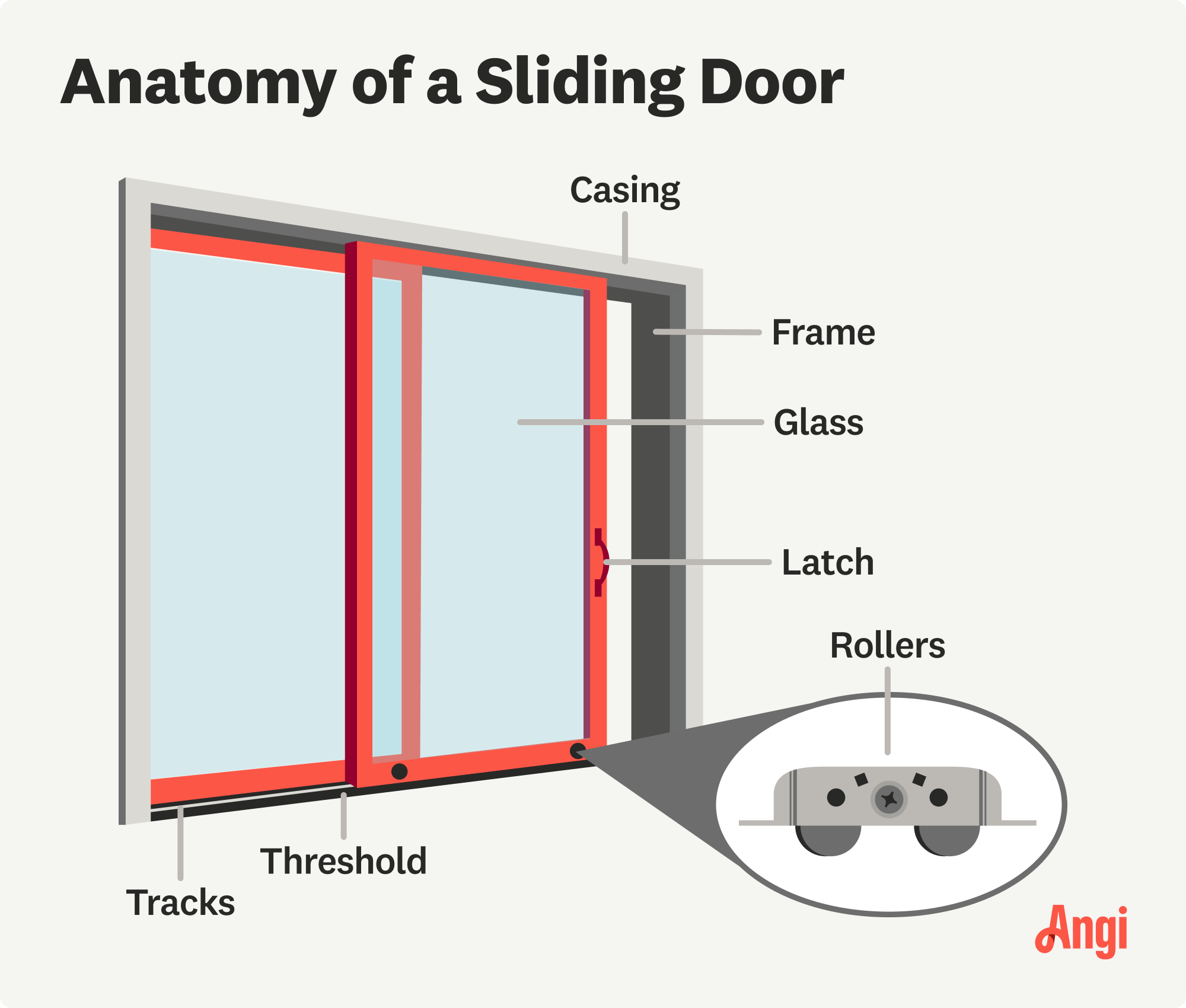
The anatomy of a sliding glass door is considerably more complex than that of a standard door. It involves the framing and weatherproofing of heavy parallel glass panes, with one (or more) of these needing to glide smoothly on rollers. The individual construction components vary depending on the door's size, type, and design. However, we’ve broken down the essential sliding glass door parts on every design to help you better understand how to fit, fix, and maintain this feature.
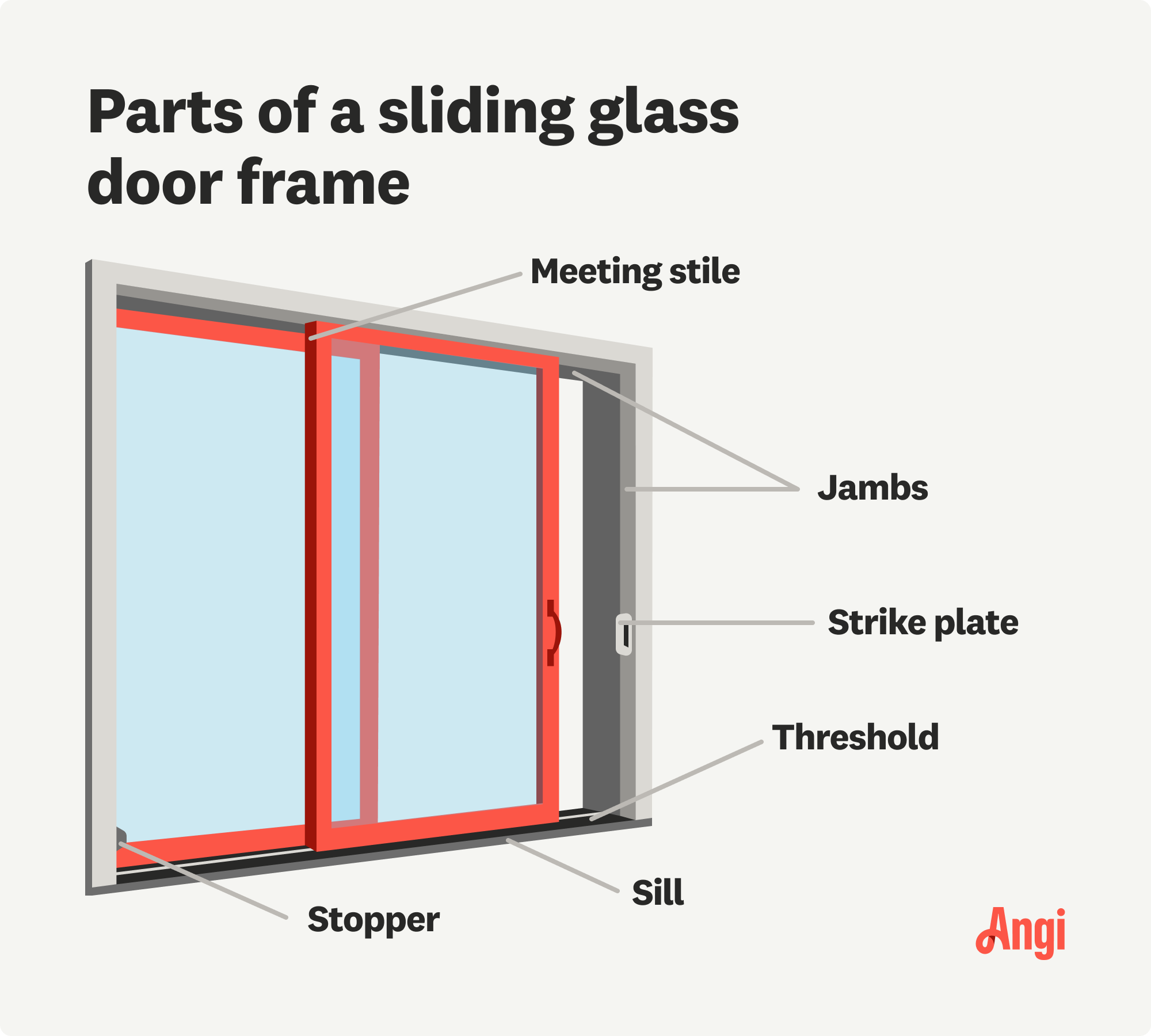
The interior and exterior frame is the backbone of a sliding glass door. This essential part has several components and comes in various materials, including wood, vinyl, or aluminum. Some of the key frame parts include:
Meeting stile (astragal): This creates a seal over the gap where the sliding panels meet. Without this, drafts, outside noise, and bad weather can leak in.
Door jambs: Two vertical side and one horizontal head jamb support the door's weight, ensure proper alignment and stability, and aid weatherproofing and security.
Sill: A rough finishing that fastens to the base of the frame, helping prevent water and drafts from entering the base of the door.
Threshold: Adding a threshold on top of the sill provides a more seamless and stylish appearance.
Stopper: This small device acts as a buffer. It sits at the bottom of the frame and prevents the sliding door panel from hitting hard against the frame, causing damage.
Strike plate: This thick metal plate is part of the lock hardware. It attaches to the vertical door jamb and reinforces the area where the lock enters.
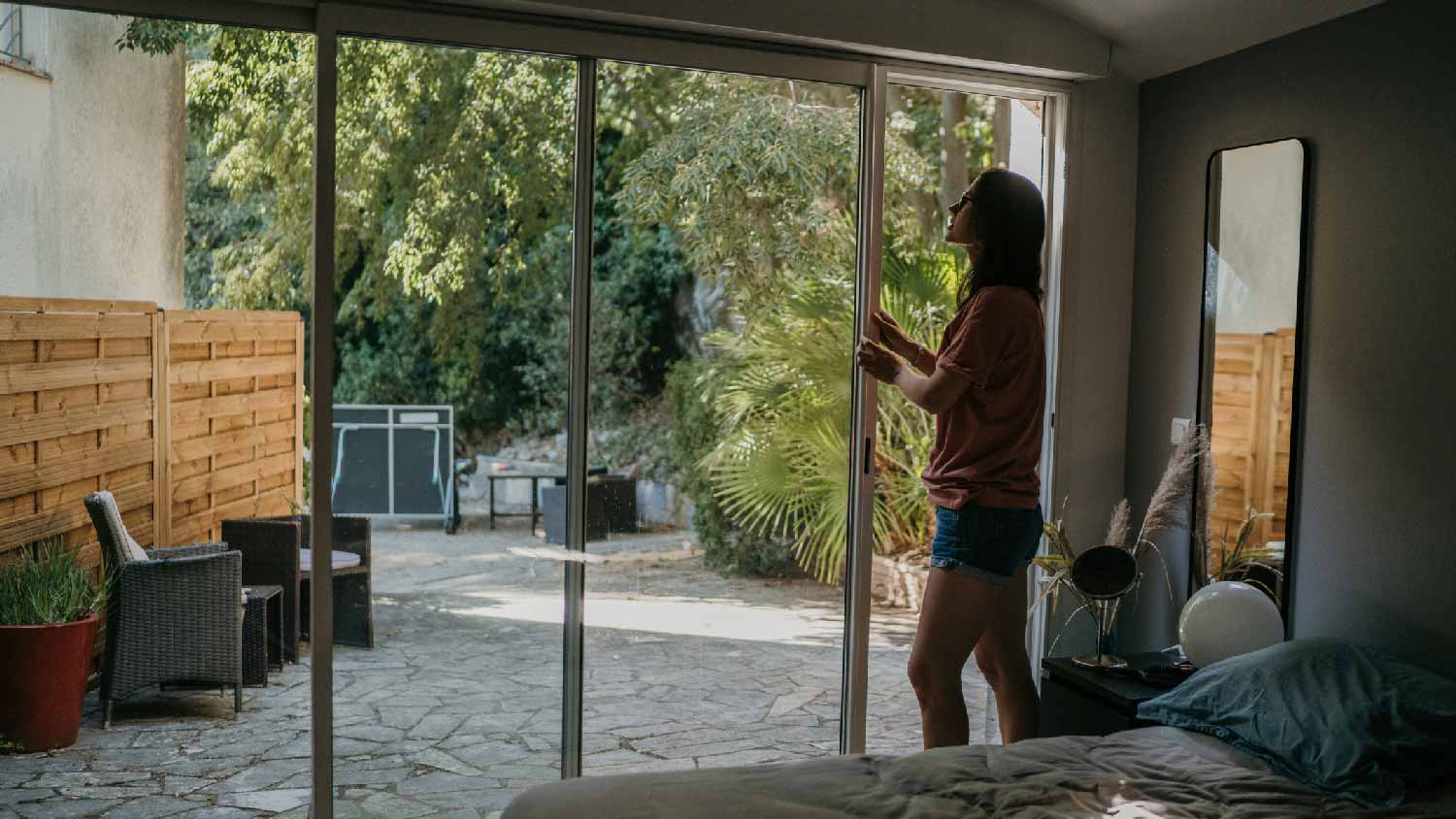
The top and bottom tracks are like the rails that keep a train on its course. They allow the moving door to glide open and close with durable plastic or metal rollers attached to the panel. The tracks are adjustable, allowing you to fit the rollers and tighten them so they slot into the recessed bottom tracks and don’t pop out of position.
Sliding doors have a fixed glass panel and one or two operating sliding panels. Occasionally, there can be more panels depending on the sliding glass door size and design. The glass is usually tempered, meaning it is particularly tough, and if broken, it will shatter into smaller pieces rather than more hazardous large shards.
Your sliding glass door needs weather stripping across the full vertical and horizontal jambs to keep cold drafts, outside dust, and rain at bay. This is often a simple, thick, adhesive foam or rubber tubing that attaches to the frame and forms an insulating, energy-efficient seal between the frame and the door panels.
Adding decorative trim tidies up and seals the rough opening between the wall and the framing of your sliding glass door. The interior trim is called casing, and the weatherproof trim around the frame on the door's exterior is brick molding. There are a variety of door casing styles and materials, but most trim is wood, vinyl, composite, or metal.
Opening and securing a glass sliding door requires a handle and lock. Handles can be recessed into the door panel frame for a streamlined look or surface mounted. These allow you to pull the door open and push it closed, and they usually have an integrated lock.
While standard mortise locks are common, there is a wide variety to choose from, including deadbolts and smart door locks. You can add an extra layer of security by installing a lock that screws into the base of the frame. There are also security bars that fit onto the tracks, designed to stop the door from being able to slide open from the outside even if you forget to lock it before heading out.
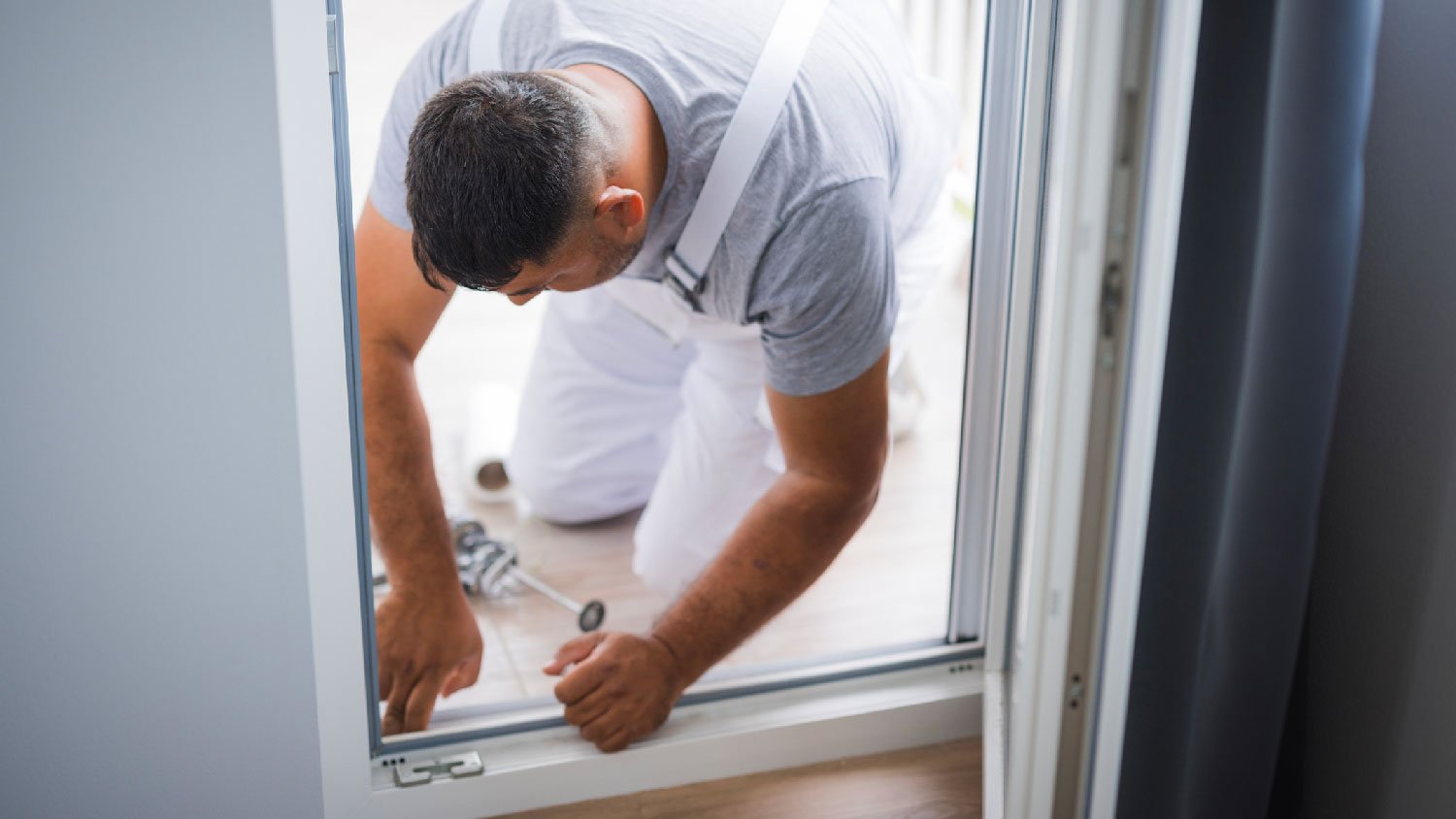
Providing your sliding glass door with a little TLC protects against premature replacement. Get into the habit of performing the following maintenance to help prevent problems with sticking, leaking, and locking.
Track cleaning: Trailing dirt gets stuck in the tracks and can lead to the doors sticking or not sealing or locking properly. To clean your sliding door tracking, vacuum out the worst of the debris and lift any remaining using soapy water and an appropriate brush.
Track oiling: Applying a silicone-based lubricant to the rollers and the track twice a year can help to keep them gliding effortlessly. Avoid oil-based options, as they can attract dirt.
Replace worn-out weather stripping: Foamy or rubber weather stripping can wear down over time, leading to drafts or sliding glass door water leaks. Replacing it is usually something even non-handy homeowners can tackle.
Clean glass carefully: To prevent damage to the panels, frame, or trim, avoid abrasive or harsh chemical cleaners, like alcohol or ammonia. And don't use abrasive scrubbing sponges or harsh steel wool scourers. Stick with gentle microfiber cleaning cloths and newspapers for drying.
According to data from Angi, 88% of homeowners are looking to replace an existing sliding door, while only 12% want to put one where one didn’t previously exist. If you’re not sure what the right call is for your home, get in touch with a local sliding glass door company.
The cost to repair a door depends on the type of repair needed, so expect to pay $30 to $120 per hour for professional labor. You can save money by DIYing simple repairs, like replacing worn rollers or weather stripping for under $50.
However, it’s often best to hire a local sliding glass door company when major repair work, such as replacing glass on a sliding door, is on the cards. Sliding glass door parts can be finicky and difficult to remove; the door panels are heavy and delicate, and if you have alignment issues, you can further damage parts or end up with leaks or security issues. The average cost to install a new sliding glass door is $2,475, so mistakes can be costly.
Our office has a new lease on life, thanks to Custom Paint Jobs LLC. Outstanding work!
Window depot replaced all 14 windows in my house, front door and added a new back door. They did a wonderful job with some tricky windows in this old house. They were quick but efficient and cleaned up everything inside and out. I have already passed their contact information on to my...
Scott did not get appropriate access to the property prior to the scheduled inspection which required us to come back later in the day to complete it. He also, unprofessionally, knocked on a neighbor?s door in his attempts to reach someone with access. His overall report was fine though the...
We used Unique Hardwood Floor LLC three years ago to work on the floors of a 70 year old home that needed a great deal of work. Some floors needed repairs, some were replaced and others just needed to be refinished. It was a complicated job as they needed to blend the old and the new to...
Roger met me at a moments notice. I was in a bind. He was available and very accommodating. He was right on time, very professional.. the transaction was seamless! Thank you for your help I look forward to working together more in the future.
the garage door (not the powered opener) was binding and generally not working as it should. They corrected all the problems with that door and then went on to the other door to make sure it, too, was working properly. Nice fellow, very helpful. Would definitely use again.
They are great to work with, super quick to respond and schedule an appointment. Their work is really great as well, I'm very happy with the results. My house has a huge amount of windows and French doors and they are in and out in about an hour.
From average costs to expert advice, get all the answers you need to get your job done.

There’s nothing better than a dog door to give your pet free access to the outdoors. Use this dog door installation cost guide to see what it will cost you.

The frame is a crucial part of a door’s looks and proper functioning. Here’s how much you can expect to pay to replace a door frame in your home.

Discover the cost to weatherstrip a door, including average prices, key cost factors that impact your total price, and tips to save on your project.
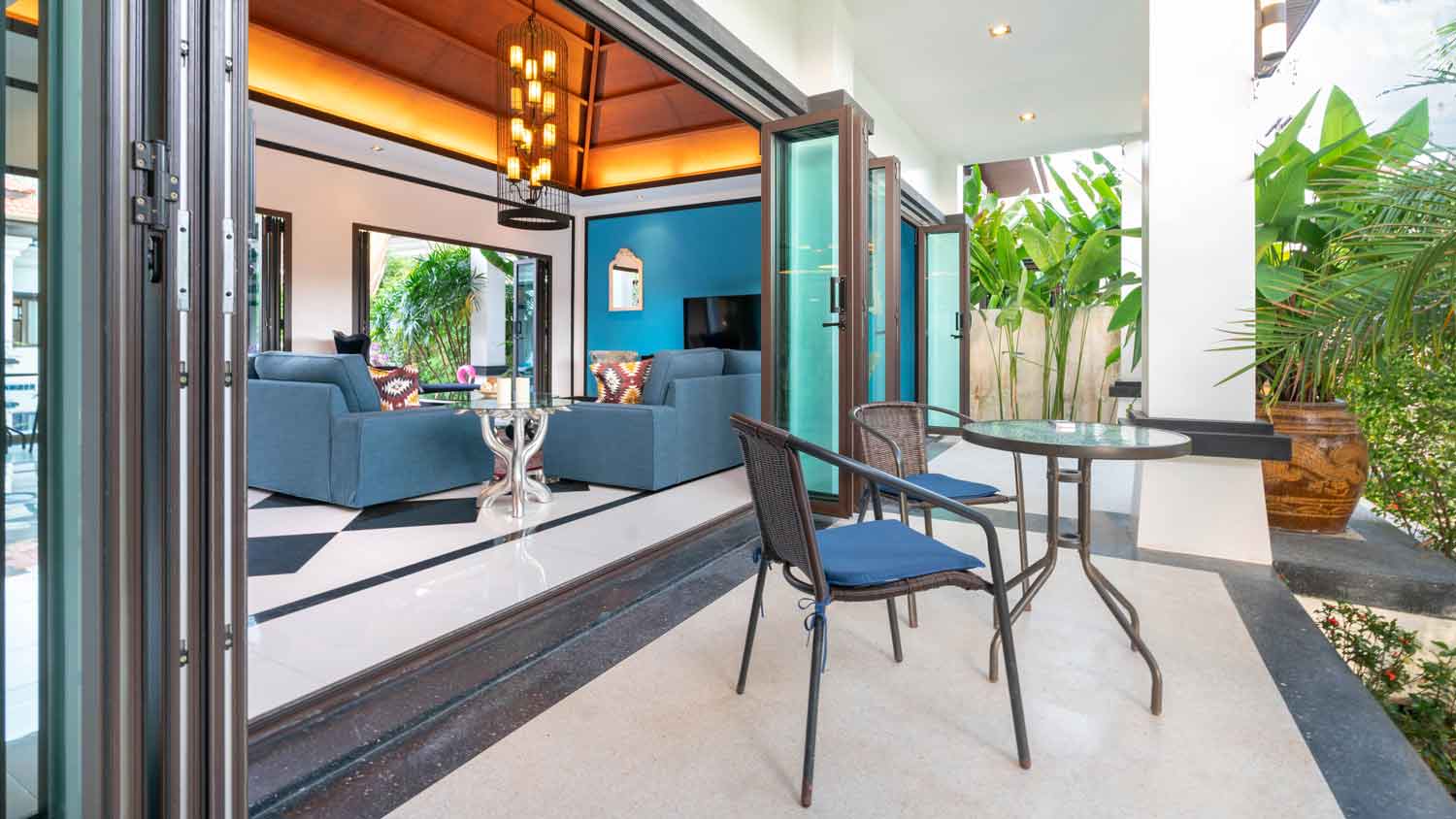
Folding patio door costs vary greatly depending on the size of the opening, door material, type of glass, and level of customization.

Planning to install a new or replacement storm door? Learn how to measure for a storm door to ensure a snug, secure fit for your home.

Doors don’t have a one-size-fits-all option. Read on to see the standard door sizes you can expect when purchasing your next one.